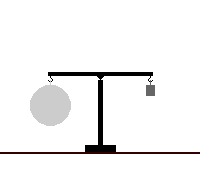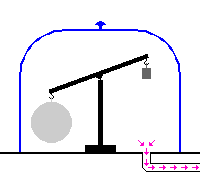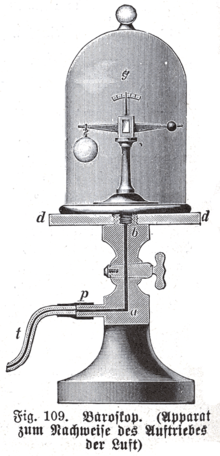Dasymeter
The Dasymeter , also known as a baroscope , air balance or balance manometer , is a device for demonstrating the static buoyancy of objects in air. It was invented by Otto von Guericke in 1650 .
construction
The Dasymeter consists of a beam balance with a larger, low-density body (for example a hollow glass body) attached to one side and a small, high-density body (for example a lead weight) attached to the other. The mass and volume of the two bodies are selected in such a way that the beam balance is in equilibrium in air (at normal pressure ). If, on the other hand, the dasymeter is in an evacuated vessel, it tilts to the side of the large body.
Physical explanation
According to the Archimedes' principle , the body with the larger volume experiences a greater lift in the air than the body with the smaller volume. In a vacuum, however, this buoyancy is no longer present, so that the beam balance tilts to the side of the large body.


